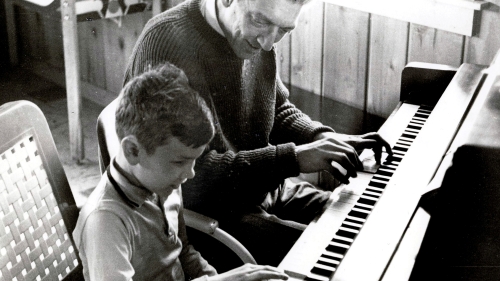
NYU Steinhardt's Center for Music Therapy is named after Paul Nordoff and Clive Robbins. Their clinical work, conducted from 1959 to 1974, was ahead of its time. Paul Nordoff had an uncanny ability to perceive the form and quality of music that could reach the dormant potentials of his clients and spontaneously create music to activate new development. He improvised music of the highest order to engage, support, and challenge. Clive Robbins, with his keen perception of understanding and approaching children and adolescents who were difficult to reach, complemented Nordoff’s music perfectly. Together, these creative visionaries forged a powerful and thriving legacy: a novel music-centered approach that emphasized the therapists’ creativity and sensitivity, and focused on listening deeply to clients’ nonverbal, verbal, and musical expressions.
Since Nordoff and Robbins audio recorded their music therapy sessions as part of their clinical practice, contemporary researchers have been able to revisit these recordings to support the practice of music-centered music therapy. Tamar Hadar, a participant in the Nordoff-Robbins blended learning certification training, used archival session recordings to engage in research about the approach. With contributions from Kenneth Aigen, Director of NYU Steinhardt’s Music Therapy Program, Hadar recently published Music, Time, & Self: A Time Model for Nordoff-Robbins Clinical Improvisation. By analyzing original recordings, Hadar offers fresh perspectives that enhance modern music therapy practices. Furthermore, Hadar's analysis was deepened through her participation in the Nordoff-Robbins Blended Learning Certification, supervised by NYU faculty member Alan Turry and the Nordoff-Robbins Center managing director, Zachary Kandler. Her book provides practical recommendations for music therapists and a framework for assessing the temporal phases clients experience during sessions, along with suggested guidelines for interventions.

